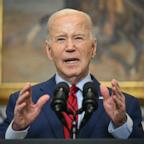Study: Cigarette Ads Stomp Out Anti-Smoking Efforts
W A S H I N G T O N, June 11 -- Joe Camel may be gone, but cigarette makersare still coming up with ads that have a greater impact on youngpeople than anti-smoking messages, said a study released today.
Exposure to cigarette ads leads young people to identify smokingwith popularity and relaxation, and these associations are strongerthan any perceived risk picked up from anti-smoking ads, theUniversity of Pennsylvania's Annenberg Public Policy Centerreported.
The research was culled from interviews in 1999 and 2000 ofapproximately 2,600 people aged 14 to 22 and 1,500 people 23 andolder.
In 1998, the tobacco industry ended a slew of health-relatedlawsuits by agreeing to make annual payments to the states worth$246 billion. The settlement also included restrictions onadvertising that might attract teenagers. Among these were a banon billboards and cartoon characters such as R.J. Reynolds' JoeCamel.
But young people still are exposed to cigarette ads inmagazines, convenience stores and through promotional events inbars and restaurants, the report said.
Adolescents and young adults were more likely to recallcigarette ads than those over age 30. For example, nearly 90percent of 18-year-olds recalled recently seeing such ads, comparedwith about 50 percent of 50-year-olds.
No Determent
About 75 percent of 18-year-olds reported seeing anti-smokingads. Such messages did increase awareness about the risks ofsmoking, but they did not stop people from trying cigarettes ifother ads had already formed positive images about smoking, thereport said.
Matthew Myers, president of the Campaign for Tobacco-Free Kids,called that an important finding. "Teenagers are less responsiveto information about health risks than they are about the overallpsychological view of smoking that's fostered by tobaccomarketing," he said.
The report said young people had misconceptions about the risksof smoking. For example, it said 63 percent of young peopleincorrectly thought there were more deaths each year due to drugand alcohol abuse than to tobacco.




